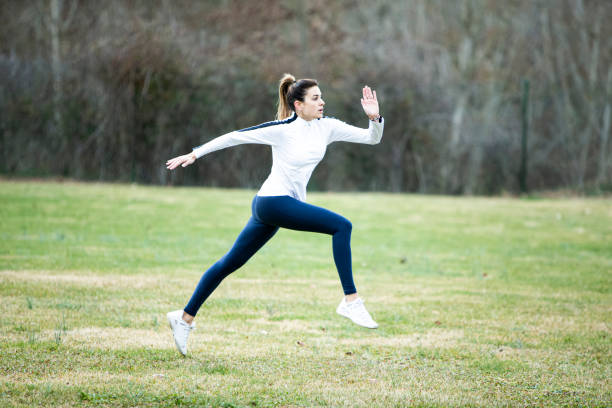What Are Effective Exercises to Boost Your Vertical Jump?
Jumping higher is a key factor in excelling at sports like basketball, volleyball, and track and field. Improving your vertical jump not only enhances your athletic performance but also increases your power, balance, and agility, which are essential for functional and athletic movements.
Helping you to reach new heights, following are the exercises to Improve Vertical Jump and keep you fit.
Consistent practice of the following exercises can significantly improve your vertical jump. Experiment with each to determine which ones yield the best results for you.

- Jumping Jacks
Jumping jacks are a versatile plyometric exercise that helps build lower body strength, vital for improving your jump height. They also increase your heart rate and challenge your body to move in different planes, which is beneficial for sports that require quick directional changes.
How to Perform:
- Start by standing with your feet hip-width apart and arms at your sides.
2. Jump up, spreading your feet apart while raising your arms overhead.
3. Jump back to the starting position with feet together and arms by your sides.
4. Perform 2–5 sets of 10–20 repetitions. - Single-Leg Deadlifts with Jump
This advanced exercise focusses on stability and strength, enabling you to jump explosively using one leg at a time. If it’s too challenging, start with a plyometric reverse lunge before progressing to this move.
How to Perform:
- Stand with your right foot extended behind you, keeping it off the ground if possible.
- Lean forward, aligning your torso parallel to the floor, while extending your right hand towards the ground.
- Jump explosively, lifting your left foot while raising your right knee in front of you and your left arm overhead.
- Return to the starting position and repeat.
- Perform 2-3 sets of 3-10 repetitions on each side.
- Burpees
Burpees are a full-body exercise that builds strength, endurance, and cardio fitness, all essential for explosive jumping. You can modify burpees to be easier or more challenging depending on your fitness level.
How to Perform:
1. Begin by standing with your feet shoulder width apart.
2. Drop into a squat position, placing your hands on the floor in front of you.
3. Jump or step your feet back into a high plank position, then perform a pushup.
4. To return to a squat, either jump or step your feet back towards your hands.
5. Explosively jump up, extending your arms overhead.
6. Perform 1-2 sets of 10–16 repetitions.
- Forward Linear Jumps
Forward linear jumps focus on your core, hips, and thighs, allowing you to practice jumping both forward and upward. To increase intensity, minimise the time between jumps by launching into the next jump as soon as you land.
How to Perform:
- Stand with feet under your hips, arms at your sides, and core engaged.
2. Drop into a squat position, extending your arms behind you.
3. Jump forward by pushing off with your feet and extending your legs, while swinging your arms overhead.
4. Land softly, bending your knees and hips to absorb the impact.
5. Perform as many repetitions as you can with proper form.

- Squat Jumps
Squat jumps build explosive strength in your torso, hips, and legs. Once you’re comfortable with squat jumps, you can add weights to increase the challenge.
How to Perform:
1. Stand with feet hip-width apart, arms at your sides, and core engaged.
2. Lower into a squat position, keeping your back straight and knees slightly bent.
3. Pause briefly, then jump explosively, bringing your knees towards your torso mid-air.
4. Land softly, bending your knees to absorb the impact.
5. Perform 2-4 sets of 6–12 repetitions.
- Rebounding
Rebounding, performed on a mini trampoline, simulates the sensation of jumping with less joint stress. It’s a fantastic way to practice jumping while enhancing cardiovascular fitness.
How to Perform:
- Begin by lightly jogging on the trampoline, gradually increasing your knees’ height.
- Incorporate intervals of intense jumping or side-to-side movements, followed by periods of slow jumping or rest.
- Perform at least 7 intervals, gradually increasing the duration of the work phase as you progress.
Takeaway
Improving your vertical jump requires dedication and regular practice of targeted exercises. By incorporating these exercises into your routine, you’ll enhance not only your jump height but also your overall athletic performance. When comparing Vert Shock vs Jump Manual, both programs offer unique approaches to improving your vertical leap, with Vert Shock focusing on plyometrics and rapid results, while Jump Manual emphasizes a more comprehensive strength and conditioning regimen.
For more expert advice and comprehensive training tips, check out Dunk Journal. This is a blog website where you will get detailed information about dunk news, scholarly articles and Whether you’re aiming to dunk like the pros or just improve your game, Dunk Journal offers the resources you need to succeed.

